Introduction
The light spectrum is the combination of all the wavelengths of energy produced by a light source. Three types of the spectrum can describe almost every light source: continuous, absorption, and emission. A continuous spectrum is emitted by hot objects, such as light bulbs or flames. If dark lines appear on the spectrum, it is called an absorption spectrum. It usually appears when a continuous spectrum passes through cool transparent gas. Streetlights, neon signs, and streetlights are characterized by an emission spectrum. The present report includes specific examples of the spectrum produced by light sources that can be found in every household and their comparative analysis.
Setup
To finish the report, a simple spectroscope was created using cardboard paper and a recordable DVD. According to the instructions, the cardboard was black on the inside to cut down additional light (“DIY Spectroscope”). Figure 1 is a picture of the spectroscope that was used for the present project.
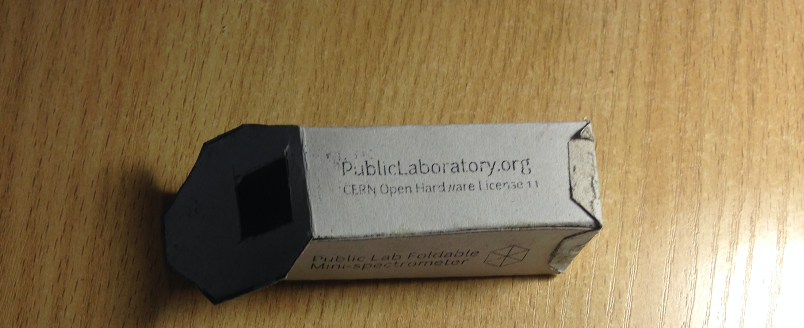
Light Sources
For the present project, four light sources were chosen: a monitor in a dark room, a lamp with LED light, a lighter, and sunlight reflected from the floor. Even though it was originally attempted to include a picture of the moon, the attempts to capture the source were unsuccessful due to weather conditions. Below are the images of the sources and the spectrum produced by them.
Monitor
The object was included in the report since many students and office workers spend extended hours in front of a monitor. They may be curious how the light produced by the source looks like seen from a spectroscope. Figure 2 is the photo of my monitor, and Figure 3 is its spectrum. The photos were taken at 9 AM at my house on July 18, 2019.
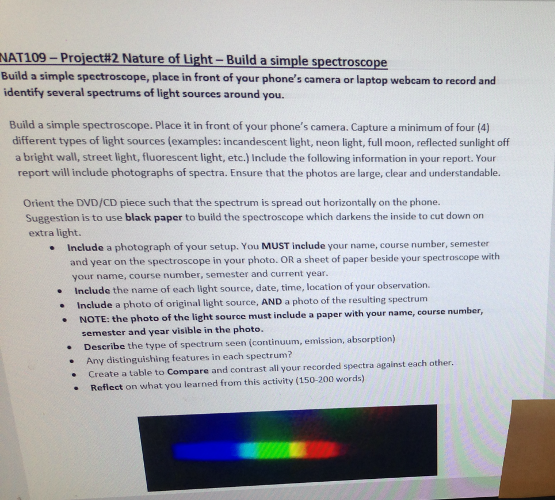
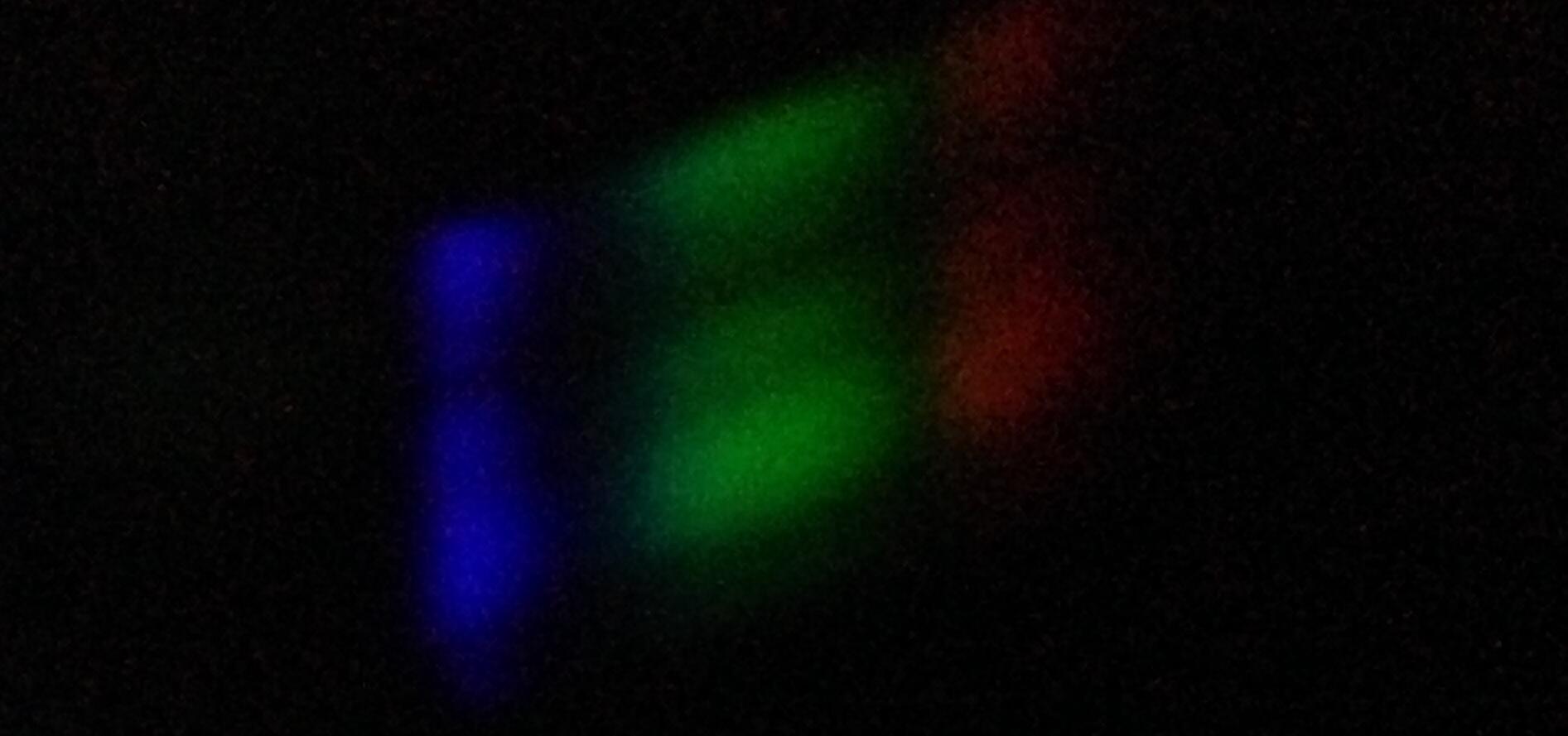
As the photo is unclear due to the weakness of the light source, it is hard to determine the type of spectrum. Since the light source is a hot object, the spectrum should be continuous. However, the photo suggests that it is an absorption spectrum. Its distinguishing features are blurriness and weakness of light source. Blue, green, and red are the only colors seen in the picture of the spectrum.
Lighter
The pictures of the second source, the lighter, was taken in the dark hall. Figure 4 is the photo of the lighter taken on my table at 11 AM (July 18, 2019), and Figure 5 is the picture of the spectrum produced by the lighter’s fire.
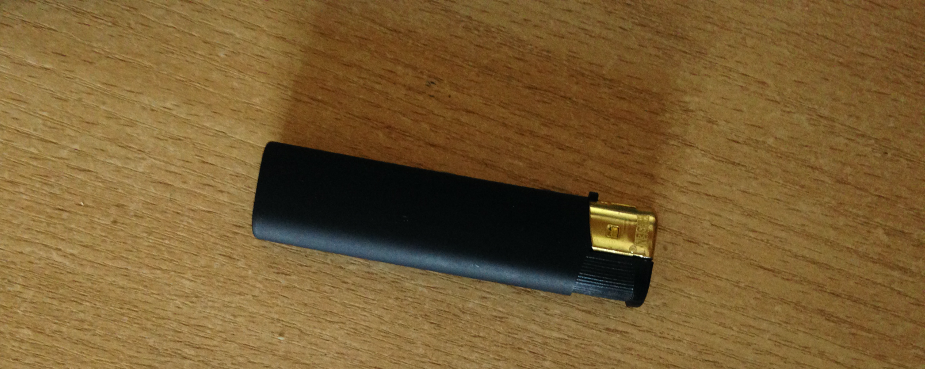
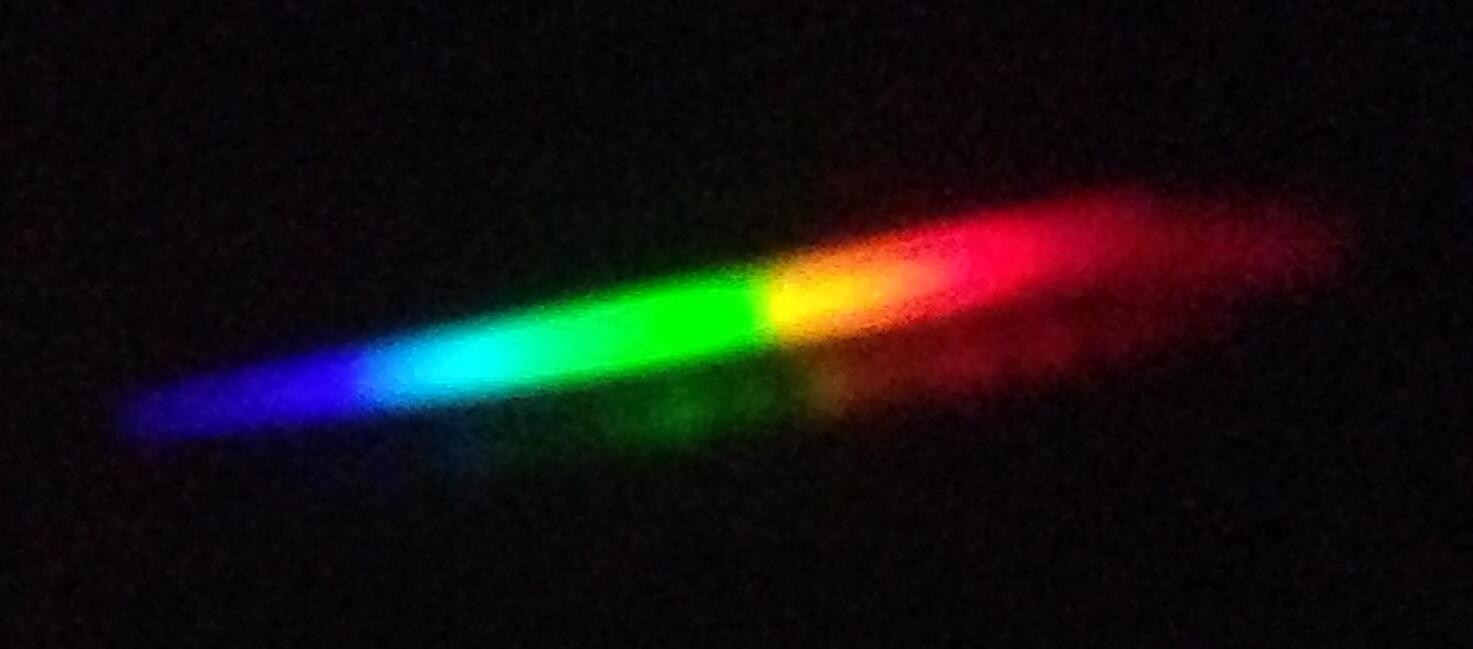
The lighter produces a continuous spectrum, which can be seen in Figure 5. While representing all colors, the spectrum is thin, clear, and bright with blurred borders between yellow, orange, and red. This may be due to the characteristic of the light source, which is a thin and tall pillar of fire. The fire, however, is bright when observed in a dark hall.
LED Lamp
The picture of the LED lamp was taken on the same day, July 18, 2019, at 10 AM at my house. Figure 6 is the photo of the lamp and Figure 7 is the spectrum produced by its light.
The light source creates a continuous spectrum since all the colors are seen without black spaces. The line is double, as the lamp has several small lights and the spectrometer seems to have captured light from two of them.
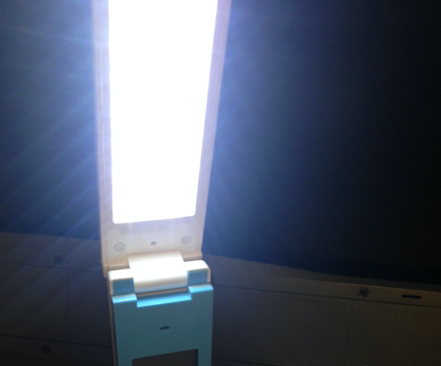
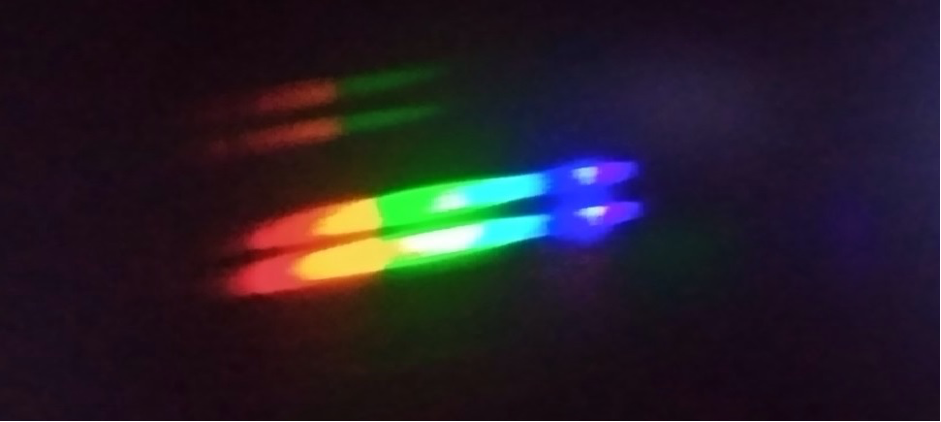
Reflected Sunlight
The picture of sunlight reflected on the floor in my bedroom was taken at noon on July 18, 2019. The original source can be seen in Figure 8, while Figure 9 is the spectrum produced by it. It is a continuous spectrum, which is blurred and bright with no purple color.
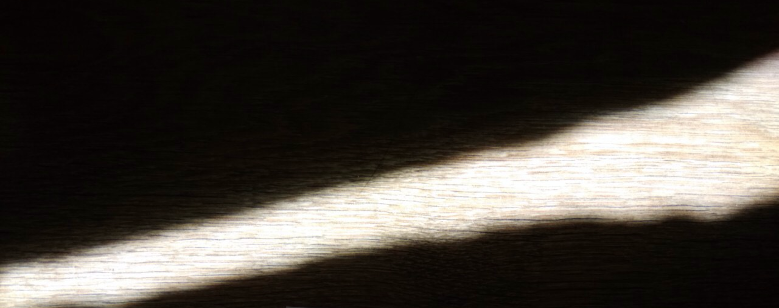
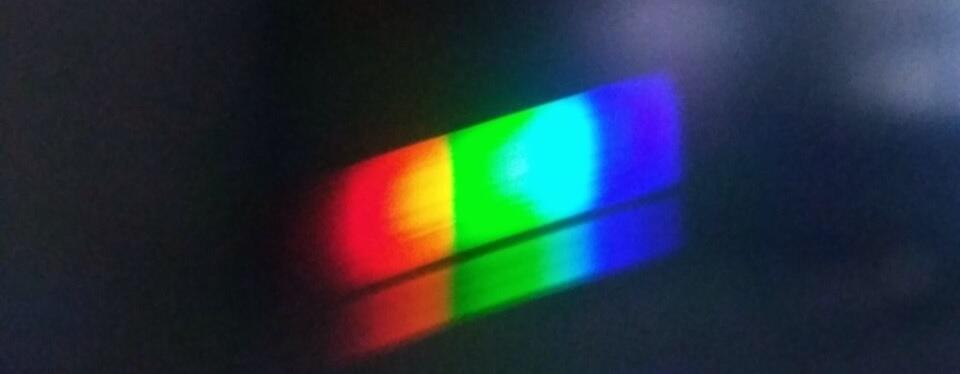
Comparison Table
Personal Reflections
The activity helped me to acquire first-hand experience in making the pictures and analyzing spectrum produced by various light sources. It has also enabled me to create a simple spectrometer from materials available in almost every household. I have learned the factors that influence the quality of pictures of the spectrum, which are the cleanliness of the rainbow taken from the DVD, the presence of unneeded openings in the spectrometer, and the characteristics of the light source and the camera. I learned that the best pictures are received when there are no additional lights to make a better contrast.
While writing the present report, I learned to distinguish between spectrum types and acquired knowledge about the characteristics of light. Even though I was unable to capture an emission spectrum, I can predict what type of spectrum a light source will produce. The research leads to understanding that the majority of light sources in an average household are emitted continuous spectrum.
Work Cited
“DIY Spectroscope.” PublicLab. Web.